5 Ways to Save Money on Taxes if You’re Self-Employed
As a self-employed individual, taxes tend to be a constant focal point throughout the year as far as your finances are concerned. With quarterly estimated tax payments and a 15.3% self-employment tax, you may feel like taxes are the bane of your existence and that you pay too much. While we all know taxes are an important part of funding our government and the social services they provide, nobody likes paying more than their fair share. Yet, outside of increasing your business expenses to reduce taxable income, what other steps can you take to save money on taxes? Fortunately, probably more than you realize. Below we cover five ways to save money on taxes if you’re self-employed.
1. Time your income
If you are like most self-employed workers, you use the cash method of accounting, which means you include the money you actually or constructively receive during the tax year in your gross income.
“Constructively” means income that is made available to you without restriction, such as a check that you receive in December for services rendered but don’t deposit until January. Since you could have deposited the check in December, it would be included in that previous tax year’s gross income.
Near the end of the year, however, you have a lot of flexibility around the timing of your billing. You can accelerate income into the current tax year or defer it to the next in order to maximize or minimize your income for the year.
For example, you might expect to be in a higher tax bracket next year so you want to tax as much income as you can at this year’s lower rates. Alternatively, you might expect to be in a lower bracket next year and want to defer as much income to that year instead.
Each self-employed person’s situation is unique so make sure to consult your licensed tax professional if you have questions around what makes sense for you.
2. Time your expenses
Just as you can time your income, you can time your tax-deductible expenses as well by either accelerating or deferring when they occur depending on when they might be more advantageous to you.
For example, you might want to buy new equipment this year instead of next year. Certain types of equipment, such as computers, software, vehicles, and furniture qualify for the Section 179 expense deduction.
This section of the tax code allows you to deduct 100% of these expenses in the tax year they were purchased up to a total of $1,040,000 (2020) providing your equipment purchases for the year total $2,590,000 or less.
Depending on your current situation, deducting 100% of these costs in the first year may be more advantageous from a tax standpoint than capitalizing and depreciating the costs over multiple years.
We recommend you consult your licensed tax professional to determine what deductions you can take advantage of and to help you optimize when to take them.
3. Review your tax-deductible expenses
Towards the end of the year, it’s always a good idea to go through all of the expenses you have incurred for the year to make sure you aren’t missing any tax deduction opportunities. Some of the costs often missed include:
- Work-related vehicle expenses
- Business insurance premiums
- Home Office
- Loan interest on business loans
- Startup costs
This is by no means an exhaustive list so consult your licensed tax professional to determine what additional deductions (if any) you can take advantage of.
4. Consider a different business entity structure
As a self-employed individual, you can choose which business entity structure you use, such as a sole proprietorship, partnership, limited liability company (LLC), C corporation, or S corporation. Each entity type has its own features, advantages, and disadvantages. Different entity types may also be treated differently for tax purposes.
For example, you might’ve started your business as a sole proprietorship. This structure gives you complete control and is easy to form, but it does not produce a separate business entity. Rather, all profits and losses from the business flow through to your personal tax return and you have to pay both federal income tax and self-employment tax.
At higher annual profit levels, self-employment tax can become a sizable burden and one you may wish to do something about. As a result, you might consider converting to a different entity type such as an S-corporation to help reduce your overall tax burden.
As an S-corporation, there’s clear separation between you and your business. Your business pays you a W-2 wage with federal/state income tax and Social Security and Medicare taxes withheld and split 50/50 between you the W-2 employee, and you the business owner. Any remaining profits can then be distributed to you throughout the year that are only subject to federal/state income taxes and not self-employment tax.
As long as the IRS would consider your W-2 wage “reasonable compensation” for your profession, you have flexibility in what your W-2 wage is. Additionally, a larger portion of your income can be profit distributions that avoid self-employment tax and corporate tax.
Again, make sure you consult your licensed tax professional to determine which entity structure is best for you. There may be added administrative costs and filing requirements based on the entity you chose. Your tax professional will be able to help you weigh the added costs and requirements with the potential tax savings.
5. Implement a retirement plan
One tremendous benefit to being self-employed is the savings capacity you have in a retirement plan such as a Solo 401(k) or SEP IRA.
The contribution limits on these plans are much higher than the $6,000 ($7,000 if over age 50) you can contribute annually to a Traditional IRA or Roth IRA. For both Solo 401(k)’s and SEP IRA’s, total contributions are limited to $58,000 for 2021 ($64,500 if over age 50).
In a Solo 401(k), you get to wear two hats: employer and employee. As the employee, you can contribute 100% of your income up to $19,500 for 2021. As the employer, you can make an additional profit-sharing contribution up to 25% of your compensation or net self-employment income (net profit less half your self-employment tax and any plan contributions you made for yourself). Compensation is capped at $290,000 in 2021 for factoring your profit-sharing contribution.
A SEP IRA is much simpler, allowing you to contribute up to 25% of your net earnings from self-employment (not including contributions for yourself) with the same $290,000 compensation cap for 2021.
Solo 401(k)’s allow for pre-tax, Roth, and after-tax contributions in addition to loans. SEP IRA’s only offer pre-tax contributions and nothing else, so Solo 401(k)’s are often the more attractive option for the flexibility they offer.
However, if you plan to hire employees at some point, a Solo 401(k) will no longer be an option for you, so keep that in mind if you are considering a retirement plan for your business. Lastly, Solo 401(k)’s require filing Form 5500 with the IRS each year once the plan has $250,000 or more in assets, so they tend to be more of an administrative burden than SEP IRA’s.
Nonetheless, both retirement plan options allow for tax-deductible contributions that reduce your taxable income and can help you save money on taxes in addition to saving money for retirement.
As licensed investment advisers, retirement plans are one of our areas of expertise and something we can help you figure out and implement. Click the button below to schedule a free consultation with one of our expert advisers.
SCHEDULE A FREE 1-ON-1 CONSULTATION
The Bottom Line
There is no “one-size fits all” solution for mitigating your tax burden as a self-employed individual. Maximizing your tax savings each year means working closely and proactively with your licensed tax professional and financial advisor to optimize the opportunities available to you.
Securities and Advisory Services offered through Calton & Associates, Inc., Member FINRA/SIPC. OSJ: 2701 N. Rocky Point Drive, Suite 1000, Tampa, FL 33607 (813) 264-0440. Forefront Wealth Partners and Calton & Associates, Inc. are separate entities.
Calton & Associates, Inc. does not provide legal or tax advice.





